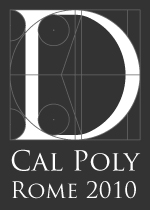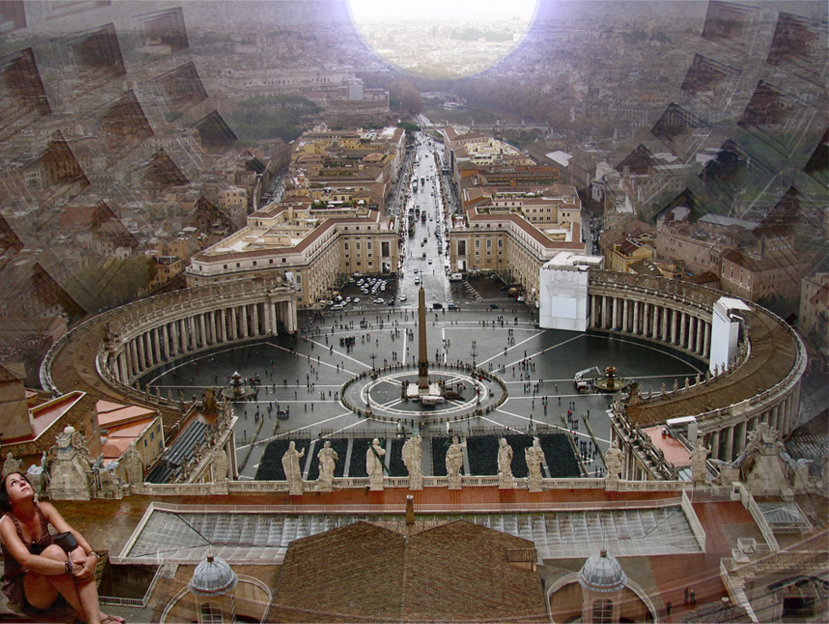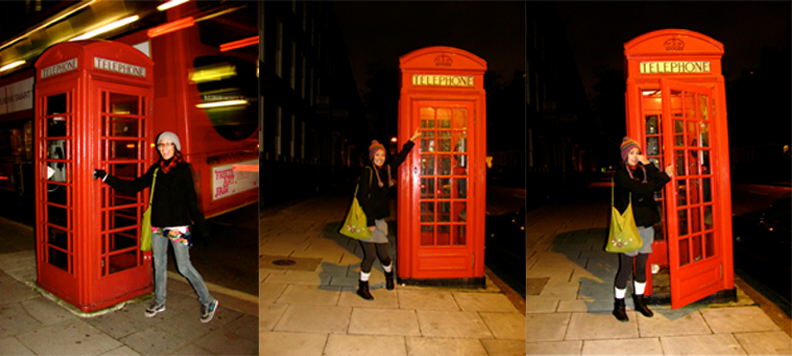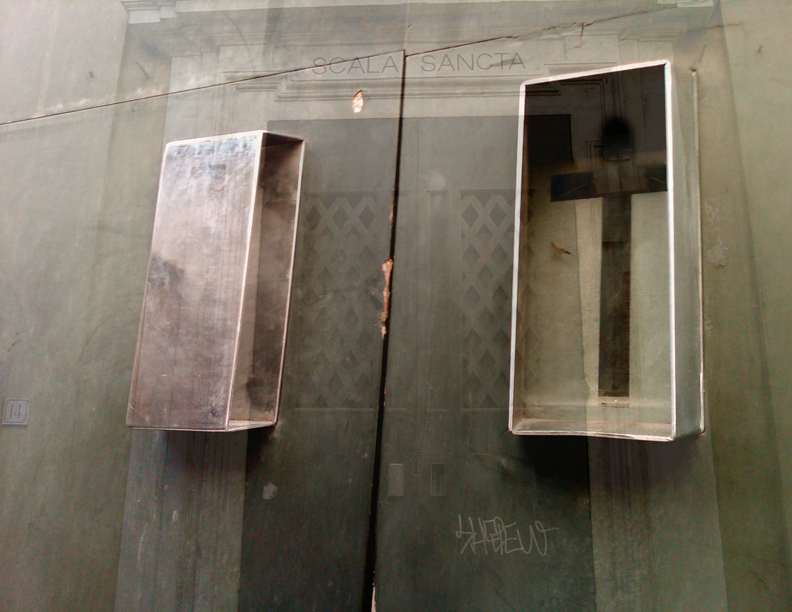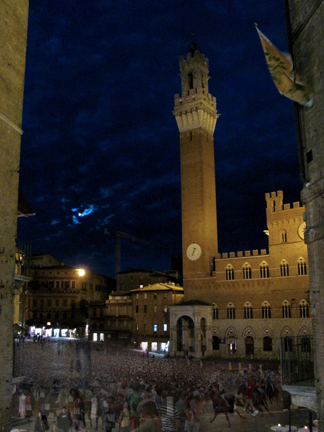How have the past fifteen weeks changed your outlook on architecture?
In Rome, buildings have a unique relationship with the site they sit upon. I have overheard walls speak to each other. I discovered how difficult it is to find the differences between big buildings and small cities. I have ventured to the mountains and the sea and the part in-between. I have tried to decipher way too many maps. I’ve seen history activated. I am still trying to figure out what makes a good architectural translation. I learned that every detail has its own story to tell. In fifteen weeks I have done a lot. I have also eaten a lot of gelato. And in that time, I have learned a lot about architecture and myself. This time in Rome has opened up my senses. I now take in the sounds, smells and sights around me. I must, not only to remember, but also to learn. I must, to keep an open mind and realize the possibilities. Architecture is so much more than curtain walls and green roofs. It is too easy to get stuck in what everyone else is telling you to do. Architecture is constantly changing, and must adapt accordingly. In 150 words, I find myself stumbling over the right things to say. How much this experience has meant, and how much I have learned. Before, I didn’t realize architecture could have such a power over you, I didn’t realize the feelings that can be evoked. Now, I want more. I want to create places/spaces/buildings so that others can experience these same kinds of emotions and happiness.
So, thank you, Rome.
What works behind the scenes to make a city perform as such?
The stage is set, the lights are dim, and the cast is in their places. The audience is ready for a show. But what they see, the front side of the performance, is only a small part of what is really going on.
London is a bustling city, huge and full of life. There is much that goes into keeping the parks so green and the streets and transportation systems so clean. Yet, the visitors and inhabitants rarely realize the work it takes to maintain this city’s beauty and character. There are people who must hang the Christmas lights and decorations down all the streets, there are people who must clean the glass skyscrapers in The City. There are the many youth hostels and hotels, filled on weekend with tourists that must be up kept and constantly cleaned. There are many Christmas markets and fairs all of which must be assembled and reassembled every year. This city is impeccable, however, without the hardworking people that dwell and work in it, the audience wouldn’t keep coming back for more.
It’s all fun and games from the outside. But, what few realize, is how smelly the inside of the phone booths really are.
Tell the tale of a detail.
Look at me; touch me even. Please, I beg you. Just step closer, look inside. I am a door handle, covered in dust. I am unique, but few people realize my importance. Without me, you cannot open this door, discover a new place, be carried away. I will lead you to holy stairs, some call scala sancta. Everyday I am passed without a second glance, but those that come inside know how special this place truly is.
Stop, let me just tell you a little story. First, look through my handle, and it will make much more sense. See, some people believe that those steep steps behind this door lead up to the praetorium of Pontius Pilate in Jerusalem which Jesus Christ stood on during his Passion on his way to trial. For centuries these stairs have attracted Christian pilgrims who wish to honor Him. These need to be climbed up with devotion, faith and passion on knees. When you reach the top, you are faced with Him, nailed to the cross and are brutally reminded of why you are there.
Now, people do not come as often. I’m not sure what happened, what changed. But I’m still here, a beautifully crafted handle made of steel and glass, with layers and layers of meaning behind. Just waiting…
How is Venice, Venice and not anywhere else?
In Venice: You are surrounded by water. Buses are called Vaporettos and boats replace cars. Everything, including the garbage, is brought in and out by boats. Men wear stripes and wide-brimmed straw hats. You can’t understand a word the gondoliers are saying to each other but still every tourist takes a gondola ride. The forcula is specific to every gondolier. Only four people know how to make them. Ground water floods the piazze and catwalks become sidewalks. Getting lost becomes a part of your daily routine. It is too easy to hit a dead end at a canal. The canal water looks and smells disgusting. There are only four bridges that cross the Grand Canal. Every souvenir shop and stand is full of masks and costumes. People drink colorful cocktails called spritz (and boy, do they enjoy it). The only real green space is taken over by art and architecture shows. Pictures and statues of a lion with wings are everywhere. The Campanile has been restored numerous times due to fires and rebuilt “how it was, where it was” after a devastating collapse. And by the end, you are excited to get back to solid land where the streets are properly labeled on a map.
How is Siena, Siena and not anywhere else?
In Siena: You go up stairs and/or escalators to get into the city. The streets hold little trash. Less cars and Vespas buzz by. You are surrounded by stripes. Green and rolling landscapes border the walls. People sit or lie down in piazze. Horses race around the Piazza del Campo once a year during an event called the Palio. You find yourself wondering where all the people are. You’ve climbed the Torre del Mangia and seen the whole city from the top. You’re still wondering why the name translates as “Tower of the Eater”. All the rooftops look the same. Medieval buildings seize control over the city. The Duomo has as many tourists as St. Peter’s. Each contrada is represented by an animal or mascot. The coat of arms is on almost all major buildings. The locals have an overwhelming sense of Sienese pride. The air is a little colder. The leaves are changing colors. And even though you love this small city, by the end of the trip, you can’t wait to get back home, to Rome.
I’ve been collecting gelato spoons. Now I have 57, so what should I do with them??? Suggestions!?
What makes a good architectural translation?
Think beautiful gardens. In the summer, a place for shade and picnics; in the fall, a place for changing leaves and the zoo; in the winter, a place full of barren trees and brisk air; and in the spring, a place of budding flowers and bicycle rides. Now, stir and combine with beautiful villas, influential people, and hundreds of years of history.
An architectural translation can mean many things, and say everything without saying anything. To me, architectural translations can say the same thing in a different (and/or modern) way or can say something completely different while taking a piece of history to build off of. Villa Borghese is a 17th century building inspired by 16th century style which housed art collections in the 19th century. Scipione Borghese helped sketch this out and originally used it as a villa suburbana (a party house) and later used it to house his extensive art collection. The gardens are the second largest public park space in Rome, and the gardens that we see now were remade in the early 19th century. This former vineyard is the most extensive gardens built in Rome since Antiquity. Together, the Villa Borghese gardens and what is now Galleria Borghese translate the events of the 17th century and today are used in a very productive and similar way. On one end, the events that occur in a villa suburbana are greatly different than those that happen in a villa that contains art collections. But viewing art in the 19th century is also incredibly different than it is today. As well, the events that occur in a vineyard are also very different than those that occur in carefully manicured garden. The emotion that takes over immediately upon entering the site and seeing the massive landscape, interior and the art is overwhelming. At that moment, you fall back in time and relive all its history, if only for the two hours spent walking around. For these reasons, mostly emotional more than physical, this complex successfully translates architecture, nature and art.
How is history made active?
What was once the site of the Stadium of Domitian is now a piazza. In the first century AD, Romans went there to watch the agones (“games”) and it was known by many as ‘Circus Agonalis’ (competition arena). In 1652, the piazza was turned into a lake on weekends in August to celebrate the Pamphili family. Today, we know this space as Piazza Navona. Full of life, artists, and fountains, this piazza is still a place for viewing. This time, people sit around the perimeter at cafes and restaurants and watch artists draw portraits during the day and spray paint at night. The Romans have understood their past culture and have used history in a productive way to transform this space into something very similar to what it was before. There is an ephemeral connection to the past, of which the fountains help to tell the stories. A sense of theater is set on this stage and the plot is constantly changing.
What does “this” map tell you about the city of Rome?
This map shows 56 gelato shops. Some of them I’ve been to, some I have not. Since day one, I have had gelato everyday. 46 days. I collect my spoon everyday, that way I have proof, and I can’t back out. My experience of Rome has been different than anyone else’s because of this promise I made to myself. Each day, I search out a place, no matter what. Ideally, I try to find new places and flavors everyday, but school kind of gets in the way. I go on adventures by myself or with friends, each day the experience is different. By the end of this semester, I will have eaten gelato for 121 days. What I’m going to do with that many spoons, I’m not sure, but they will serve as a memory; something very specific to my experience here. I’ve had great gelato, I’ve had bad gelato, I’ve dealt with friendly people, and I’ve dealt with rude people (why you would work at a gelato shop and not have customer service skills still confuses me). But all of this makes me happy. I love gelato, and I love Rome. This is something most people never do, and I’ll be proud in the end to say I have accomplished this. So, if you ever have gelato questions, come talk to the expert (me).
My favorite so far. Plus, I experienced my first ever convertible taxi ride :]
